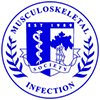Author(s): Stephanie R. Jackson*, Kelly C. Richelsoph, Joseph C. Wenke, Joanna G. Branstetter, Warren O. Haggard; Joint Program in Biomedical Engineering, The University of Memphis and The University of Tennessee, Herff College of Engineering, 330 Engineering Technology, Memphis, TN
Title: Adjunctive care for the prevention of bacteria-induced osteomyelitis using a fast-acting local delivery system
Purpose: This study investigates a rapidly dissolving (within 24 hours) calcium sulfate pellet that can be used todeliver amikacin locally as an adjunctive therapy with debridement, irrigation, and lavage to treat contaminated traumatic extremity wounds.
Methods: Pellet Manufacture Four percent amikacin-loaded pellets were made mixing 10.0g calcium sulfate dihydrate powder with 0.40gsodium carboxymethylcellulose. A solution was prepared by mixing 0.42g amikacin with 8.4g deionized water.The amikacin solution was poured over the Terra Alba and CMC powders, and the materials were mixedbriskly for 1 minute. The resulting paste was cast in a silicone elastomer mold and allowed to cure for 24 hours.The pellets (d=4.7mm, h=3.4mm, w= 40??2mg) were removed by flexing the mold and applying gentle pressure. Pellets were sterilized using low-dose Gamma radiation.Dissolution & Elution:To evaluate dissolution of amikacin-loaded calcium sulfate pellets, individual pellets (n=5) were immersed in 100ml of deionized water in a 37?XC water bath. At specified time intervals (t =1, 4, 8, and 12 hours), pellets were removed, dried at 37?XC in the oven for 1 hour and weighed. After weighing, the pellets were re-immersed in fresh DI water. Testing continued until pellets were completely dissolved. Elution was characterized by placing groups of eight pellets (n=3 groups) in 20ml phosphate buffered saline (PBS) in a 37?XC water bath. At times 1, 2, 4, 8, and 12 hours, aliquots were removed and frozen at -40PC. At each time interval, the pellets were removed and reconstituted in 20ml fresh PBS. Later, amikacinconcentration of thawed eluate aliquots was measured using a Florescence Polarization Immunoassay (TDxFLx, Abbott Laboratories). Bacterial Activity: Pseudomonas aeruginosa ATCC 27317 was grown overnight at 37?XC in Trypticase soy broth (TSB). Conical tubes were prepared with 1.75ml of TSB and 200Ql of amikacin dilutions (0-640£gg/ml), or 200Ql eluate samples (t = 1, 2, 4, 8 hours), or 200Ql buffer. All tubes except blanks were inoculated with 50Ql of 1:50 dilution of P. aeruginosa. Blanks were supplanted with 50£gl of TSB instead of bacteria. The tubes were vortexed and incubated at 37?XC for 24 hours and the absorbance at 530 nm was recorded.
Results: Dissolution testing (Figure 2) reveals that the pellets dissolve in 8-12 hours. Sterile pellet samples(n=5) averaged 14.8mg after 4 hours, which was 28.8% of the original sample weight. At 8 hours, an average of 3.8mg remained which was 7% of the initial weight of the sample. No sample remained at 12 hours. The elution profile for each sample is characterized by rapid release in hours 1 and 2 (61% recovery or 507Qg/ml by hour 1 and 92% recovery or 258Qg/ml by hour 2) followed by a relatively stable release for the life of the pellets (Figure 1). Table 1 provides sample concentrations. No samples were acquired after hour 8 because pellets had completely dissolved. Total percentages >100% are the result of carry-over on the TDx probe due to high antibiotic concentrations. The biological activity assay demonstrates that the eluate samples are active against Pseudomonas aeruginosa. The minimum inhibitory concentration (MIC) of P. aeruginosa ATCC 27317 was measured to be 2.0Qg/ml amikacin. Consistent with this data, sterile pellet eluates drawn at hours 1, 2, and 4 inhibited growth, but the eluate sample from hour 8 did not (Figure 3). The hour 8 sample concentration was well below the observed MIC.
Discussion: Military operations abroad have prompted an increase in osteomyelitis and nosocomial infections in military hospitals. Current treatment to lessen or prevent osteomyelitis utilizes surgical debridement, irrigation, lavage, and high doses of systemic antimicrobial therapy. High systemic doses of antibiotics are required because vascularization of the wound site is often compromised and many antibiotics do not distribute well to bone. However, high systemic levels can have deleterious side effects such as oto-, nephro-, or neuro- toxicity.The current work presents a fast-resorbing calcium sulfate pellet which is designed to dissolve rapidly (within24 hours) and deliver high local doses of amikacin to the trauma site with minimal systemic effect. The data shows that amikacin-loaded rapidly-dissolving calcium sulfate pellets will deliver sufficient local concentrations of the antibiotic to abate bacterial contamination of a wound, lessening the occurrence of infection. Thus, adjunctive therapy with fast-acting pellets is promising and warrants further study. Preliminary investigations of loading gentamicin and vancomycin into the fast-resorbing pellet formulation have demonstrated behavior similar to that described for amikacin.
| Sterile 4% Amikacin - loaded CaSO4 Pellets | |
|---|---|
| Hour | Eluate Concentration (ug/ml) |
| 1 | 506.30 |
| 2 | 256.80 |
| 4 | 75.70 |
| 8 | 8.60 |

